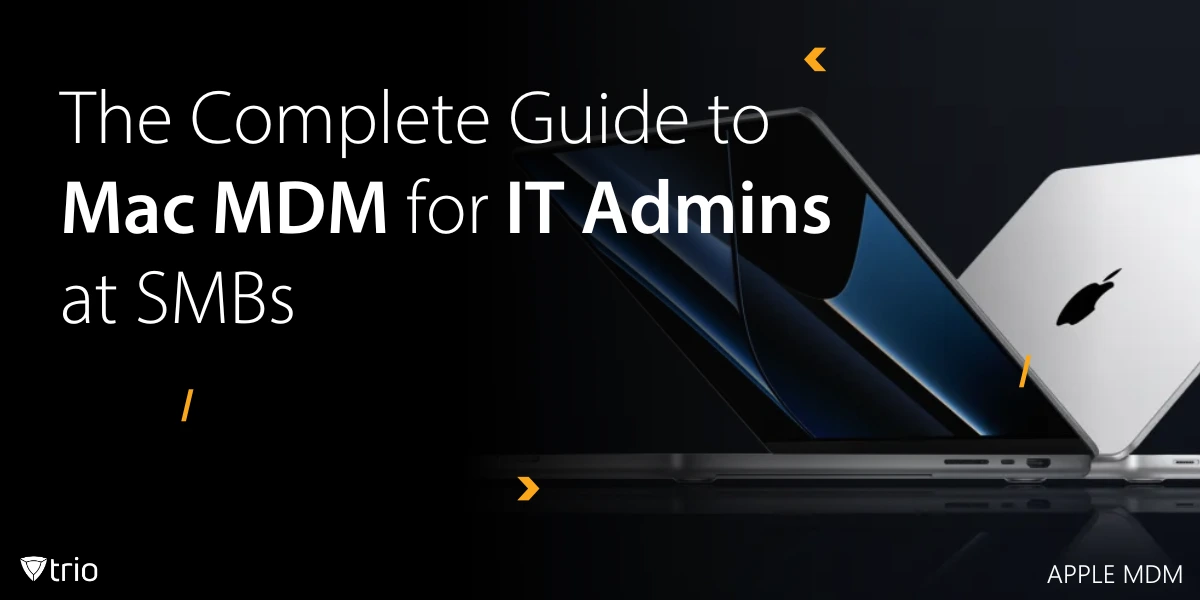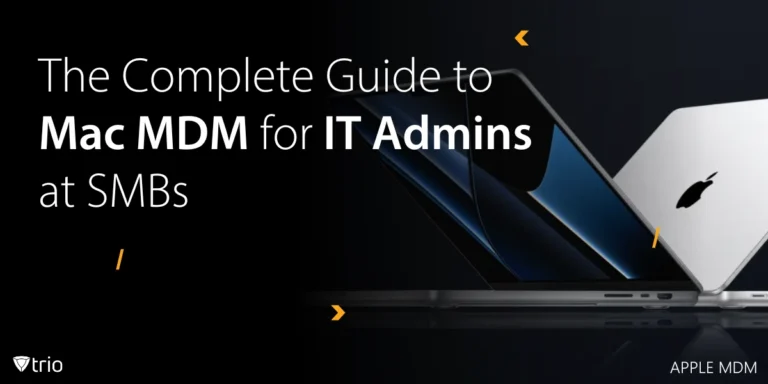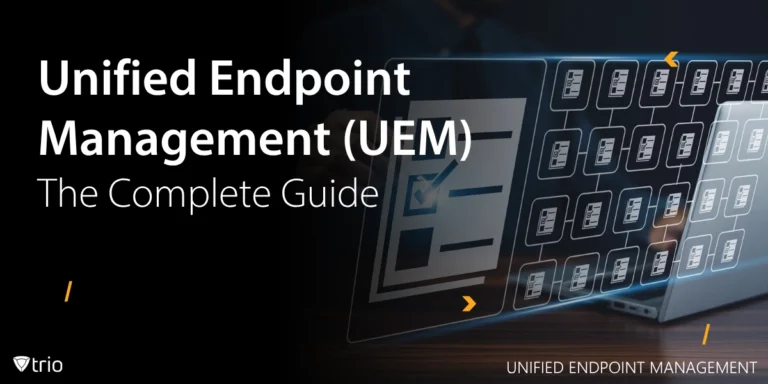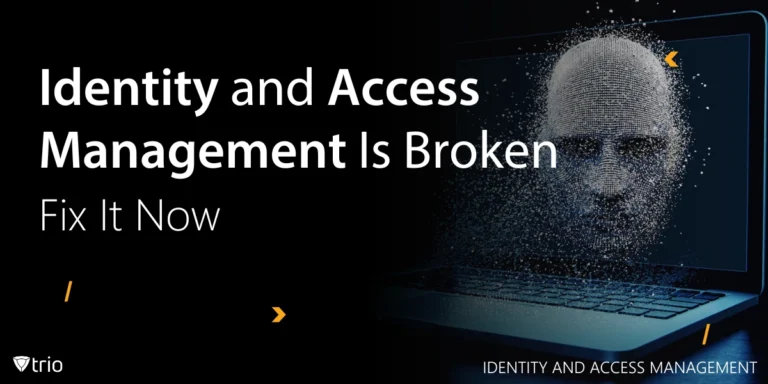Managing Apple devices in the workplace has always come with unique challenges. From Apple Business Manager (ABM) requirements to macOS security features like System Integrity Protection (SIP) and FileVault, IT administrators—especially at small and medium-sized businesses (SMBs)—need specialized solutions that work seamlessly with Apple’s ecosystem. That’s where Mac MDM comes in.
In this guide, we’ll walk you through what Mac MDM is, how to set it up, advanced management options, common troubleshooting commands, and insider pro tips—all with an eye toward helping IT admins at SMBs streamline their Apple fleet using Trio, a powerful Mobile Device Management (MDM) solution tailored for macOS environments.
What is a Mac MDM?
Mac MDM (Mobile Device Management) is the framework that allows administrators to remotely manage, configure, secure, and automate Apple devices—particularly macOS-based systems—in an organization. Using MDM, IT admins can deploy software, enforce compliance policies, restrict functionalities, and even remotely wipe or lock lost devices.
For IT admins at SMBs, the best Apple MDMs, like Trio, can reduce manual IT overhead, improve endpoint security, and deliver a consistent onboarding experience across all company MacBooks and iMacs.
Unique Apple Requirements (DEP, ABM, User-Approved MDM)
Apple’s MDM ecosystem, whether it's related to Mac and MacBook device management or iPhone/iPad device management, comes with its own vocabulary:
- Apple Business Manager (ABM): A free Apple portal that allows organizations to manage device assignments and user provisioning. ABM is required for full automation and zero-touch deployment of Apple devices.
- Device Enrollment Program (DEP): Now a part of ABM, the DEP enrollment of Macs allowed newly purchased Apple devices to automatically enroll into MDM without user intervention.
- User-Approved MDM (UAMDM): For Macs that are not enrolled via DEP (now ABM), Apple requires user consent before MDM can gain full control. This means manual acceptance of MDM profiles, limiting automation potential.
macOS MDMs vs. Windows MDM
While MDM exists for both Windows and macOS, they operate differently:
| Feature | macOS MDM | Windows MDM |
|---|---|---|
| Enrollment | ABM/DEP or manual | Azure AD Join or Autopilot |
| Admin Rights Requirement | UAMDM requires user approval | Typically admin-based by default |
| Scripting Support | Bash/ZSH scripting, configuration profiles | PowerShell-based scripting |
| System Restrictions | SIP, TCC, PPPC require explicit approval | GPOs handle most restrictions |
| Software Deployment | Profile + script driven | MSI/Intune-based |
Setup & Configuration of Apple MDM solutions
Getting started with Mac MDM requires some initial setup in both Apple Business Manager and your MDM solution. Here's a step-by-step breakdown on how to enroll via an ABM deployment. For alternatives, check out our blog: “Alternatives to Apple Business Manager.”
Step-by-Step: ABM/DEP Enrollment → MDM Profile Deployment
- Register for Apple Business Manager (ABM): Go to business.apple.com and enroll your organization.
- Integrate ABM with Trio MDM:
- In ABM, navigate to MDM Servers and add a new server using Trio’s token or public key.
- Assign newly purchased Macs to the Trio MDM server.
- Configure Automated Enrollment in Trio:
- Define your enrollment profiles (Wi-Fi, setup assistant steps, user accounts).
- Choose default device groups for automated policies.
- Ship the Device or Open It:
- As soon as the Mac connects to the internet, it reaches out to Apple, sees it’s assigned to an MDM, and automatically downloads Trio’s configuration.
- Device is Enrolled:
- The device enforces all MDM rules—password policies, FileVault activation, software installs, etc.
Terminal Commands for Troubleshooting
Sometimes things go wrong. Here are essential macOS terminal commands every IT admin should know:
| Task | Command |
|---|---|
| Check MDM status | profiles status -type enrollment |
| View installed profiles | profiles list |
| Remove a configuration profile | sudo profiles remove -identifier <profileIdentifier> |
| Check current user | whoami |
| Re-enroll device (manual) | /usr/bin/profiles renew -type enrollment |
| Trigger manual enrollment | sudo profiles -N |
These commands are especially useful during onboarding or when diagnosing failed profile deployments.
Advanced Management of Apple Device Manager Solutions
Modern Mac MDM platforms like Trio offer powerful capabilities that go far beyond basic configuration enforcement.
Security: FileVault, SIP, Privacy Controls
Apple’s security model is one of the most locked-down in the industry. Mac MDM must be able to manage:
- FileVault: Full-disk encryption can be enforced remotely, with recovery keys securely escrowed in Trio.
- System Integrity Protection (SIP): While SIP itself cannot be disabled remotely, Trio respects SIP boundaries.
- TCC/Privacy Preferences Policy Control (PPPC): These settings define what apps can access sensitive data. Trio allows you to pre-approve apps for screen recording, camera, and microphone access.
Automation: Script Deployment (Bash/ZSH), Zero-Touch Setup
Scripting is a superpower for Mac admins:
- Trio supports Bash/ZSH script deployment to run setup tasks, install apps, or enforce cleanup routines.
- Zero-touch provisioning means IT never has to physically touch the machine. Users receive a sealed Mac, connect to Wi-Fi, and Trio does the rest—configures, enrolls, and personalizes.
Pro Tips for Mac MDM Setup at SMBs
Here’s where experienced admins make the difference—especially when dealing with the quirks of Apple Silicon or choosing the right toolset, such as system extensions.
Apple Silicon (M1/M2) Quirks
Managing Apple Silicon devices comes with a learning curve:
- Kernel Extensions (KEXTs) require user approval unless pre-approved via MDM.
- Startup Security Utility: Cannot be accessed remotely; admins must configure reduced security settings manually if needed. Beware that reduced security settings are rarely needed for MDM-managed devices
Rosetta 2: Intel-based apps need Rosetta installed, which can be done via command line:
/usr/sbin/softwareupdate --install-rosetta --agree-to-license
Make sure your MDM scripts account for ARM-based differences and don’t assume Intel-only binaries.
Free vs. Paid Solutions Comparison
Some SMBs are tempted to start with Apple’s free tools or open-source MDMs. Here's how they stack up:
| Feature | Free Tools | Paid MDMs (e.g., Trio) |
|---|---|---|
| ABM/DEP Support | Limited | Full, seamless integration |
| Remote Wipe & Lock | Partial | Fully supported |
| App Deployment | Manual or CLI-only | UI-based, automated |
| Script Automation | Complex setup | One-click deployment |
| Reporting & Compliance | Minimal | Real-time dashboards |
| Support | Community-based | Dedicated SMB support team |
Overall, free tools can be useful for hobbyists or test labs, but when you’re managing real users with compliance needs, investing in a commercial-grade solution like Trio saves time and ensures security.
MDM Protocols Comparison
| Capability | macOS MDM | iOS MDM | Windows MDM | Android MDM |
|---|---|---|---|---|
| Enrollment Type | ABM/UAMDM | ABM/UAMDM | Intune/Autopilot | EMM/Zero-touch |
| Script Deployment | Bash/ZSH | Limited via MDM payloads | PowerShell | ADB/Shell |
| App Management | VPP, Custom Apps | VPP | MSI/App Store | APK / Managed Google Play |
| Device Restrictions | Deep | Very Deep | Moderate | Deep |
Conclusion
Managing Macs in a business setting doesn’t have to be complex. With the right Mac MDM solution, like Trio, IT admins at SMBs can enforce security, streamline deployment, and automate maintenance without needing a large IT staff.
Trio offers deep Apple integration, zero-touch deployment, powerful scripting, and easy-to-use dashboards built specifically for SMB environments. Whether you're overseeing 5 Macs or 500, Trio makes macOS device management efficient, secure, and scalable. Ready to see Trio in action? Check out Trio’s free demo or use its free trial today!
Frequently Asked Questions
Mac MDM relies on Apple-specific frameworks like ABM/DEP for enrollment, requires user-approved MDM (UAMDM) for full control, and must work within macOS security restrictions (SIP, TCC). Unlike Windows, Mac management excels at script-based automation (Bash/ZSH) and seamless integration with Apple’s ecosystem—tools like Trio MDM are built specifically for these nuances.
ABM isn’t mandatory but is highly recommended. Without it, you’ll face manual enrollment (requiring user approval for each device) and miss zero-touch deployment. Trio MDM integrates with ABM to automate enrollment, policy enforcement, and app deployments across your Mac fleet.
No—MDM works with macOS security, not against it. For example:
- FileVault: Can be enforced and key escrowed via MDM.
- SIP: Remains enabled; MDM respects its boundaries.
- TCC/PPPC: MDM (like Trio) pre-approves app permissions (camera, mic) but can’t disable privacy controls.
Apple Silicon adds layers like kernel extension approval and Rosetta 2 dependencies. A robust MDM like Trio:
- Automates Rosetta 2 installation for Intel apps.
- Manages kernel extensions via MDM profiles.
- Adapts scripts for ARM architecture.
Yes, but only if the user approved MDM control (UAMDM). ABM-enrolled devices allow remote wipe without user interaction. Trio ensures all wipes are logged and recovery keys are escrowed.
Get Ahead of the Curve
Every organization today needs a solution to automate time-consuming tasks and strengthen security.
Without the right tools, manual processes drain resources and leave gaps in protection. Trio MDM is designed to solve this problem, automating key tasks, boosting security, and ensuring compliance with ease.
Don't let inefficiencies hold you back. Learn how Trio MDM can revolutionize your IT operations or request a free trial today!





